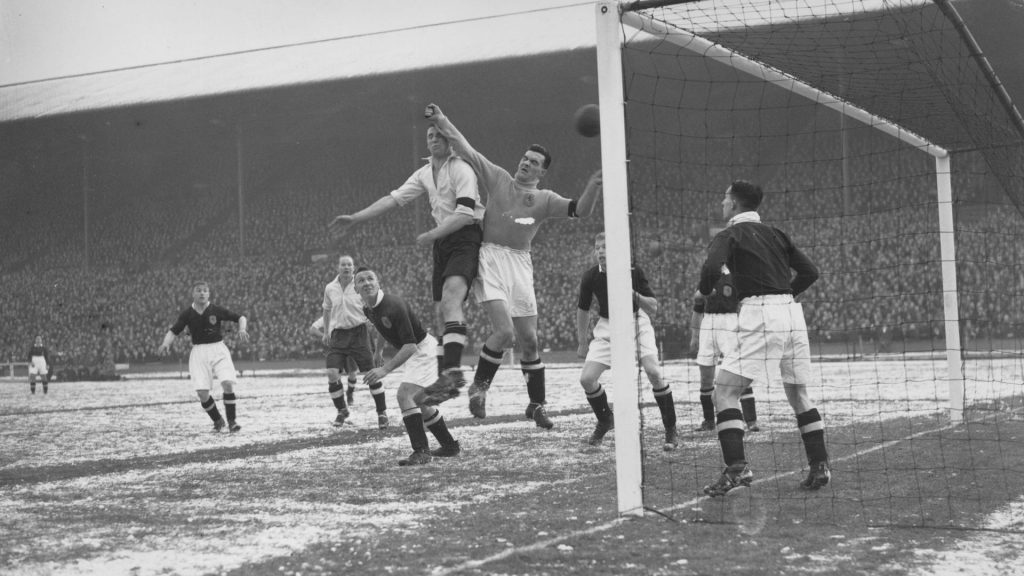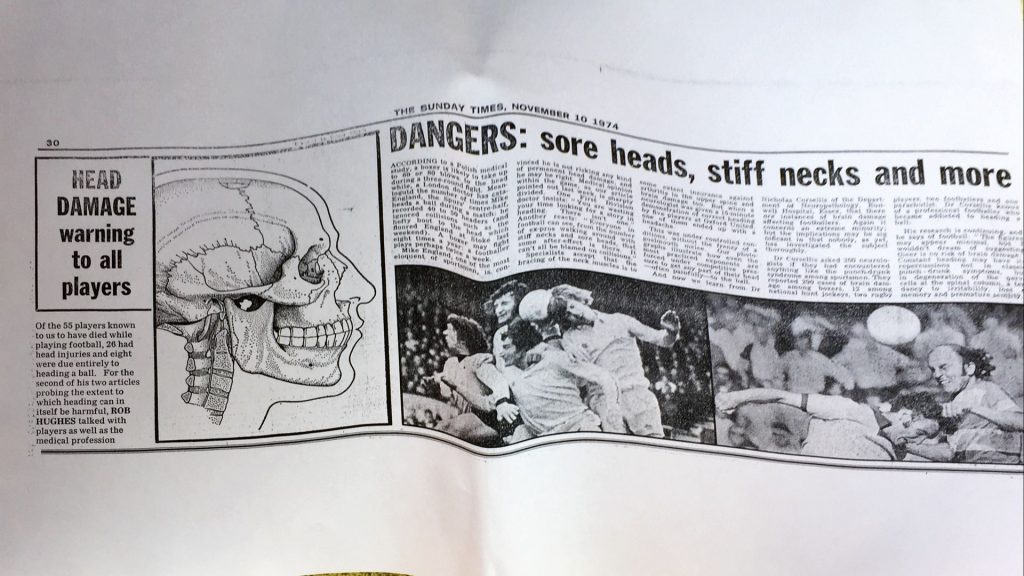
Journalist Rob Hughes was ignored when he claimed a link between heading footballs and dementia nearly 50 years ago – and the authorities are still to act properly
Pardon the cynicism, but when the UK parliament in February finally set aside time to listen to doctors and former professional footballers about dementia in our national sport, I fully expected nothing more than a government warning to “seize the moment” to tackle the issue.
Actually, that is a momentous statement. The rules of Association Football were written in England in 1863 but the rulers of the now-global game have kept their heads firmly in the sand rather than confront the possibility – the probability – of insidious damage building up inside the brain.
We knew it in boxing. We are beginning to accept it as a repercussion in rugby. And, by heavens, there are now multi-million dollar compensatory pay-offs to thousands of Americans suffering dementia as a consequence of their careers in the NFL.
The payouts for concussion to 4,500 players, or their dependents, started with a $765 million legal settlement almost a decade ago. A cynic might suspect that one prime reason football has been in such denial for so long over head injuries is exactly this, because from FIFA down the first priority of football is making money.
The European media today are pushing the dementia debate. They can hardly do otherwise because national heroes from Bobby and Jack Charlton to Nobby Stiles and to many, many more including Germany’s great ‘Bomber; Gerd Müller are ending or have ended their lives with only the foggiest memories of their glory days.
To be sure, England winning the World Cup for the only time in 1966 was a blurred lifetime ago. But even before that football was in denial of dementia.
As a young journalist, I was challenged to confront this issue by the medical officer of the British Boxing Board of Control. During the making of a television documentary featuring impaired ex-prizefighters, this doctor insisted: ‘Why don’t you look into football, there’s a lot of brain damage there’.

Delving into the files of The Times, I came across the headline “Scored, But he Did Not Know”. It was dated 1946, and it concerned England centre forward Tommy Lawton. Then 27, he had played 70 minutes with concussion.
Once you turn the pages on his career, you find recurring references to him never being the same again. Tommy made no bones about it. He talked of constant migraine, of his decline leading to the dole, even of his conviction for petty fraud. And he reminisced about his “training” method of jumping again and again to head an old leather ball suspended from the rafters of the stand until the skin peeled off his forehead.
And, yes, it’s true that the old leather ball gathered weight in mud. But plastic-coated lighter balls go miles faster through the air, and as football itself got faster and faster players were being pressured by opponents whenever they jump to head the ball. Precise contact as practised by Lawton is near impossible heads and elbows collide.
If the lawmakers are unaware of the repercussions, the media today are not. But some newspapers now claiming the credit for pushing soccer, and the government, to at least acknowledge what we cannot see going on inside the head, were dismissive of the problem decades ago.
I know this because my squeamishness over the percussive price of heading did not stop with interviewing Lawton. I buried my head in the Times and Sunday Times library and from coroners’ reports found 55 players who had died at football from 1931 to 1974. Of these, 26 had head injuries, and eight were attributed to heading the ball and nothing else.

This was of course not conclusive evidence. Footballers were not always rich; many literally came up out of coal mines to play for a pittance. So it was regarded as anecdotal.
Germany’s national trainer of the 1970s Helmut Schön observed, “It is a sad fact that racehorses very often are given better medical care in every respect than our top athletes.” Fast track to recent times, even prominent ex-players like Alan Shearer have aired their fears on TV and subjected their brains to scans.
But we have wasted decades in bringing neurology to the players. Again, over 40 years ago, I worked with one of England’s leading professors of neuropathology, and with an expert in cranial physiotherapy, to examine the living, and alas the dead.
We took the findings to the F.A. and to Fifa whose medical officers were polite, even welcoming. But the committees did next to nothing, indeed after an international conference at Lilleshall, Fifa published this rebuttal in 1999:
“Can a football be regarded as an offensive weapon? The question was raised when the popular press latched onto a limited study which suggested that persistent heading could lead to brain injury and diminished IQ . . .successive studies have failed to produce conclusive findings.”
Fifa was not listening. Alf Torvald Tysvaer, a Norwegian sports physician and neurosurgeon followed up the Sunday Times articles by engaging his country’s top 100 players and medical specialists in a 15-year study.
His findings published in 1991 included:
Thirty per cent of former and three per cent of active players had permanent symptoms associated with post-concussion – headache, irritability, dizziness, lack of concentration, impaired memory.
Thirty-three per cent of former and 35 per cent of active players had electronically monitored brain abnormalities compared with 11 and 13 per cent of non-soccer players. The harm was more evident in young players whose skulls may not have fully formed and whose skills were inferior.
Tysvaer concluded that heading will always be integral to the sport, so football must teach players good technique. And players should build strong neck muscles to lessen the impact.
Norway? Scoffed a former Harley Street doctor who was the medical adviser to Tottenham Hotspur at the time: “You are wasting your time attempting to get a story out of heading. We have had to write off two first-team players this season due to arthritis, but I’m quite convinced there is little trauma in heading the ball.”
Some years later, Jürgen Klinsmann was hailed as a “real man” after being bloodied and concussed on his Spurs debut – and insisting on playing, and heading a goal four days later. Willkommen, Herr Klinsmann to the brainless founding nation of football.
What do you think? Have your say on this and more by emailing letters@theneweuropean.co.uk









